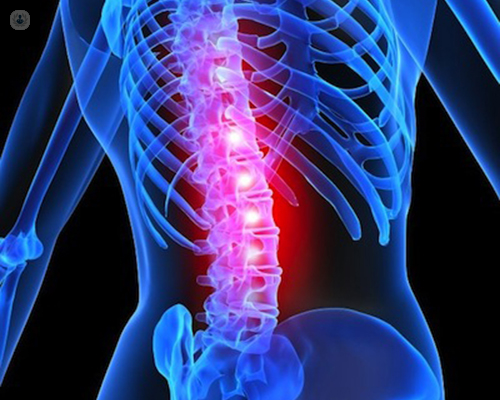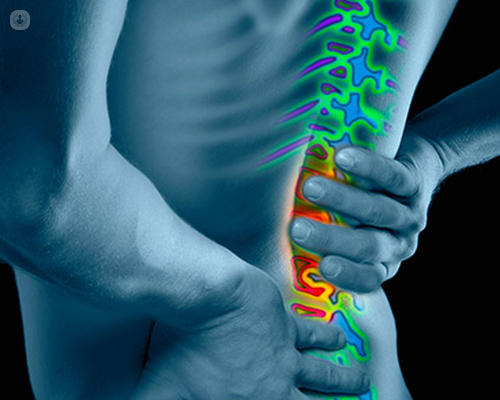Lumbar spinal stenosis 101: symptoms, causes, and treatment
Autore:“Stenosis” is a Greek origin word which means narrowing. Lumbar spinal stenosis is the narrowing of the spinal canal in the lower spine. This condition typically presents in patients over 60 years old but it is not uncommon in younger patients with early disc degeneration. In this article Mr Prokopios Annis, an internationally trained consultant spinal surgeon, explains the symptoms, the causes, how it’s treated, and what surgery entails for lumbar spinal stenosis.

What are the symptoms?
Lumbar spinal stenosis, caused by wear and tear or ageing, is a condition that develops slowly over the years. Symptoms typically present with walking and improve with rest.
In early stages, patients complain of:
- bilateral buttock pain
- numbness or tingling in a foot or leg when walking
- legs feeling heavy or weak legs
- bilateral leg pain when walking (sciatica)
- back pain (not always present)
When the condition has severely progressed, patients develop significant mobility problems. Typically, symptoms appear after a few minutes of walking (neurogenic claudication). In severe cases, patients are unable to walk for more than a few yards. Severe lumbar spine stenosis can also cause bladder dysfunction.
In order to release symptoms, patients typically bend forward or have to rest before the can carry on. Patients find it easier to walk uphill rather than downhill, or find it easier to cycle rather than walk because during these activities their spine is in flexed position. Another typical sign is the “shopping cart” sign as patients, because they are unable to walk, they lean on the shopping cart during shopping.
What are the causes?
The most common cause of lumbar spinal stenosis is spondylosis or degenerative changes due to normal ageing. This type presents in patients over the age of 60.
Other causes that can present in younger patients include:
- large disc herniation or slipped disc
- degenerative spondylolisthesis (slipped vertebra)
- degenerative scoliosis (curved spine)
- trauma
- tumours
There is a genetic predisposition for certain types of lumbar spinal stenosis.

How is lumbar spinal stenosis diagnosed?
Clinical examination and medical history are important to raise the suspicion of this condition. If your doctor suspects spinal stenosis you will be referred for an MRI scan. If you can’t have an MRI, it is likely you will have a CT scan instead. Lumbar X-Rays maybe required to exclude the possibility of lumbar spinal instability.
What is the treatment?
Non-operative treatments of lumbar spinal stenosis may include:
- non-steroidal anti-inflammatory drugs (NSAIDs)
- neuropathic medication (Neurontin, Pregabalin)
- massage, heat
- physical therapy, acupuncture
- spinal injections
What is involved in the surgery?
When non-operative treatment fails to improve symptoms and the quality of life is significantly affected by this condition surgery can be considered.
Spinal decompression or laminectomy is the most common procedure performed to treat lumbar spinal stenosis. This involves removal of bone spurs from the vertebra (laminae) bilaterally to increase space within the spinal canal and relieve pressure.
Laminotomy involves unilateral or bilateral removal of a portion of the vertebral arch (lamina). This procedure is performed under general anaesthetic and the average hospital length of stay is usually one day.
Spinal decompression and fusion can be considered in cases of associated spinal instability or in cases or revision surgery.
Surgical treatment of spinal stenosis is usually very effective and most patients return back to walking to activities but also to certain sport activities, including golf. Risks and benefits of surgery should be discussed in details with the surgeon.


